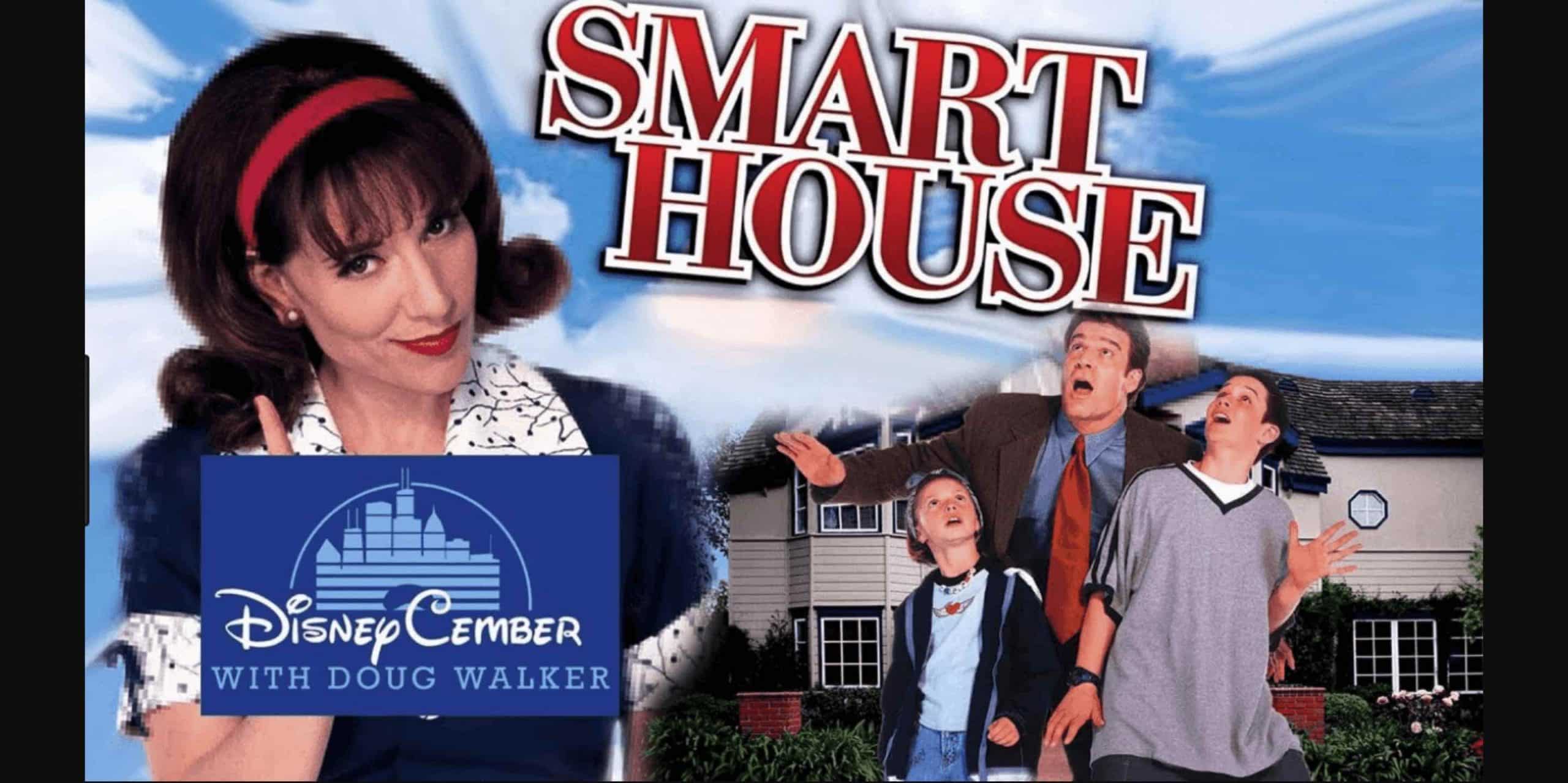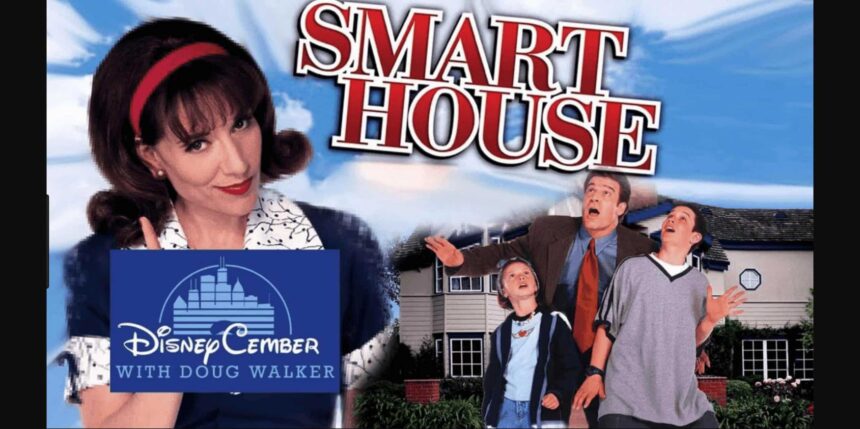
Introduction
How Realistic is Disney’s “Smart House” Now? Remember PAT? Long before Siri and Alexa, this home assistant gave us a glimpse at what it might be like to live in a smart home of the future. For the uninitiated, “Smart House” is a 1999 Disney Channel Original Movie that introduced the idea of smart home technology powered by artificial intelligence (AI) technology. PAT, short for personal applied technology and played by Katey Sagal, was the name of the smart assistant in the story.
More than 20 years after the movie hit cinemas, AI has found its way into everyday life. Whether you are checking out recommendations on Amazon, Netflix, or YouTube or telling your lights to turn on, you are using artificial intelligence technology. Smart homes, organized with the help of smart-home devices, have become a reality, but how do actual homes compare to the one featured in the movie?
Table of contents
Also Read: Artificial Intelligence and Architecture
Features from “Smart House” That Are Possible Today
Before we look more closely at the technologies in the movie, here is a quick recap of the story. 13-year-old Ben Cooper, having had a rough time following the death of his mom, hacks a contest to win a smart house. The house is not only for him, but it will also be home to his widowed father and younger sister.
The Coopers winning their dream house resolves financial trouble and, as Ben hopes, may distract his dad from looking for a new wife. “Built-in” is PAT, the smart home assistant that has been programmed to be able to tackle anything. Over time, she becomes a maternal figure for the kids. However, a little further on in the story, PAT goes too far.
Also Read: This Robot-Built House Could Change Everything
Technology We Have Today
Smart-home devices controlling lights and more
- Automatic cleaning
- Individualized alarms
- Natural conversations
- Questions about data safety
Disney Channel Original Movies may not get everything right, but “Smart House” proved surprisingly prescient. In the film, the smart technology assistant turns the lights on and off as family members move from room to room. Smart-home devices do the same today. Using smart home tech like Google Home is more than a passion project. Real life apps like these can help you control smart speakers and smart lighting.
Do you have a floor absorber? In 1999, they were the robot vacuum cleaners of people’s dreams. Rather than tidying up after a party, the “Smart House” siblings throw everything on the floor, and a floor absorber directed by PAT makes it disappear. Whilst few parents today will encourage their kids to throw things on the floor, the self-operating vacuum cleaner Roomba is the closest thing we have to a floor absorber. It’s strong enough to deal with dirt but not quite strong enough for party trash yet. Robot vacuums are here to stay.
Individual alarms and wake-up routines feature in real-life houses since the advent of mobile phones. What started with different ringtones a few decades ago, has developed into apps managing gentle or more forceful wake-up calls, depending on individual preferences.
Calling Alexa or Siri great conversationalists may be taking things a step too far. But AI technologies are becoming better at understanding and using human speech patterns. Just like Ben is programming PAT to become more maternal, AI and smart home technologies can be adjusted to reflect different moods and respond naturally.
All the features above are useful home helpers. But there are other aspects of the movie that we are experiencing today, too. In “Smart House”, father Nick questions why PAT needs to analyze the family’s diet, blood, and DNA. PAT’s programmer reassures him that data gathering isn’t about spying but about making life comfortable. Today, more and more of us are questioning how much information we are sharing with companies and institutions via our smart devices.
Also Read: What Movies and TV get Wrong About AI.
Which Features from “Smart House” Are We Still Missing?
- Robot arms
- Bully control
- Diet checks by breath control
Could your house use a robot claw? In the movie, the family’s nice house comes equipped with an extendable arm that appears when things need to be moved inside or out. The robot arm picks up the paper in the morning. It also comes in handy when it’s time to evict unwanted guests. Whilst House Beautiful magazine ascribed “Stranger Things Demogorgon vibes” to the robot claw in the movie, we think this could be rather useful. Just think about moving furniture between floors: a robot arm would make light work of tough tasks like that.
In the movie, Ben is bullied by another boy. PAT takes over and electrocutes the bully. It’s a drastic way of dealing with the issue, but we’re sure plenty of parents, kids, and teachers would love to find a convenient AI-based solution to bullying. However, perhaps something focusing on re-education would be more suitable.
Although we have access to a plethora of health and fitness apps, we have not quite reached the stage where breath analysis is as easily accessible in the home as “Smart House” makes it out to be. Evaluating a person’s diet based on their breath and analyzing their health through blood tests based on one drop of blood are technologies that aren’t quite ready yet. Though there are some apps like Lumen, that help you identify your body’s metabolism, we are not there yet for a “Smart House” like analysis.
Which “Smart House” Features Will Be Available in the Near Future?
Answering this question requires a bit of a gaze into a crystal ball. Hand on heart, we don’t have one of those, but here is an attempt at looking ahead.
The health- and well-being-related applications called biorhythm analysis in the movie may be closer to becoming a reality than we think. Diabetics already check their blood sugar levels with a single drop of blood. A few years ago, now-defunct startup Theranos promised to create a machine that could run dozens of tests based on a single drop of blood. Theranos didn’t succeed in their quest, but it’s certainly not unthinkable that biorhythm analysis or similar technology will become part of everyday life.
Automated cooking and food preparation may be another feature we’ll soon come to rely on. PAT has lunch ready for the kids and prepares coffee for Nick. In fact, many of us already have programmable coffee makers allowing us to literally wake up and smell the coffee. Ovens and other kitchen gadgets are programmable, too. Having virtual assistant technology prepare entire meals may not be as farfetched as we think.
Also Read: Impact of AI in Smart Homes
Conclusion
Smart home technology and virtual assistant technology are no longer science fiction. They have become mainstays in many homes over the past few years. In fact, can you imagine a nice house without smart technology? Waking up to the smell of coffee in the morning thanks to automated gadgets is simply too convenient.
Despite those advances, home technology is unlikely to take over a real-life house. AI-based apps and devices are here to support humans and augment what we do rather than replace us. We may not yet grasp just how far AI can take us. But it has the potential to make home life more efficient and more comfortable, giving you more time with your loved ones.
References
Fiorentino, Alyssa. “How Does Disney’s Smart House Compare To Today’s Smart Home Technology?” House Beautiful, 7 Aug. 2018, https://www.housebeautiful.com/shopping/a22655288/disney-smart-house-movie-technology-then-vs-now/. Accessed 14 Feb. 2023.
Channel, Disney. “Smart House 20 Year Anniversary! 🏠.” YouTube, Video, 26 June 2019, https://youtu.be/RxUZb3WnTpo. Accessed 14 Feb. 2023.











